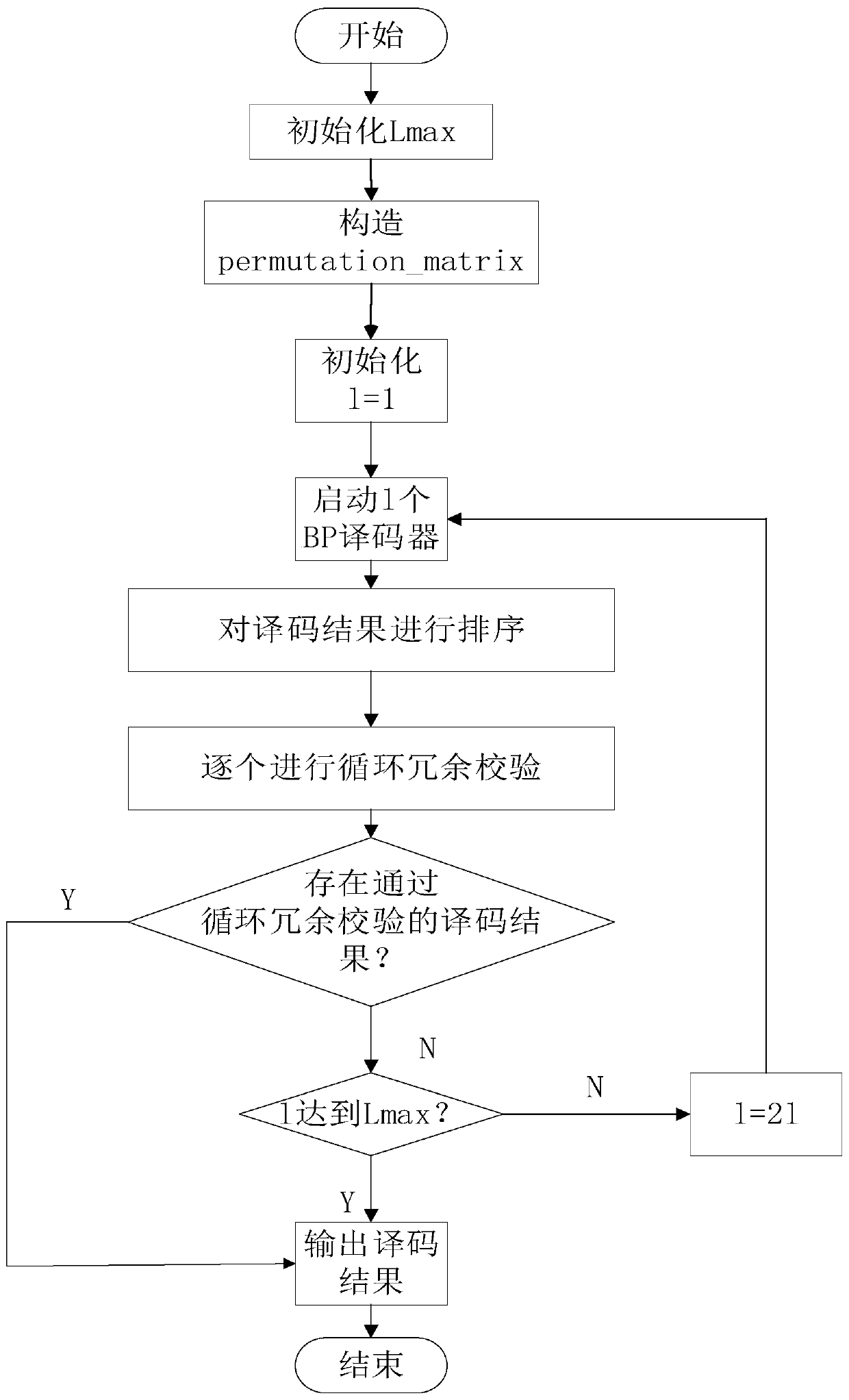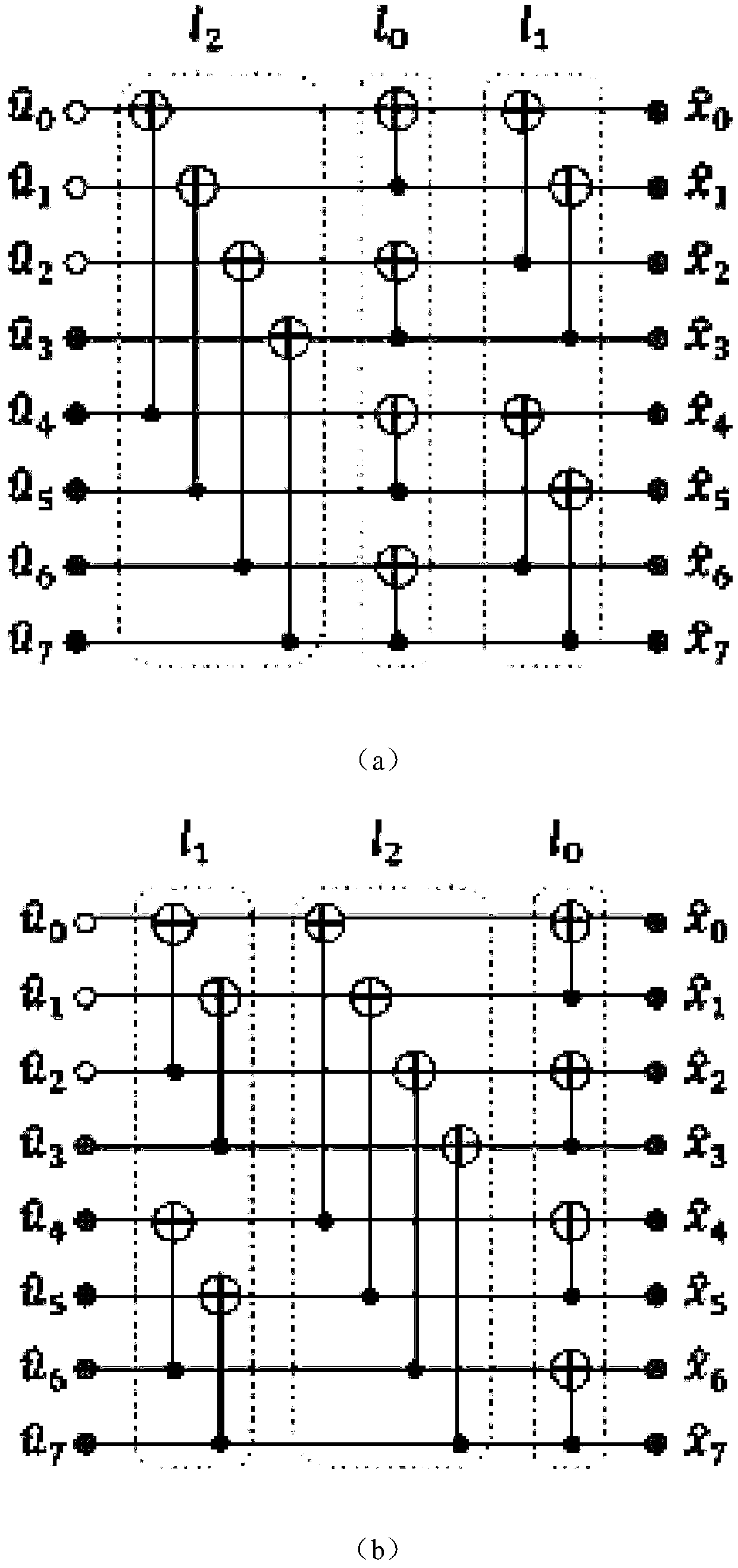Adaptive belief propagation list decoding method for polar codes
A belief propagation, polar code technology, applied in the field of channel coding in wireless communication, can solve the problems of high computational complexity and hardware requirements, poor performance of bit error rate and frame error rate, etc., to achieve small gain and computational complexity , Improve the performance of bit error rate and frame error rate, and improve the effect of bit error rate and frame error rate performance
- Summary
- Abstract
- Description
- Claims
- Application Information
AI Technical Summary
Problems solved by technology
Method used
Image
Examples
Embodiment Construction
[0024] Below in conjunction with accompanying drawing, technical scheme of the present invention is described in further detail:
[0025] The adaptive belief propagation list decoding method of polar codes in the present invention is described by taking code length N=2048, information bit number K=1024, and cyclic redundancy check code length r=8 as examples. The construction method of the polar code in this example is Gaussian approximation, the signal-to-noise ratio of the codeword construction is 2.5 decibels, and the generator polynomial of the cyclic redundancy check code is g(x)=x 8 +x 6 +x 3 +x 2 +1.
[0026] Such as figure 1 shown, including the following steps:
[0027]Step 1: Initialize the maximum number of lists L allowed max (in this case L max =4), construct 2L for BP decoding max -1 (2L in this example max -1=7) The permutation matrix permutation_matrix corresponding to the factor graph. This step includes the following processes:
[0028] (1) Accordi...
PUM
 Login to View More
Login to View More Abstract
Description
Claims
Application Information
 Login to View More
Login to View More - R&D
- Intellectual Property
- Life Sciences
- Materials
- Tech Scout
- Unparalleled Data Quality
- Higher Quality Content
- 60% Fewer Hallucinations
Browse by: Latest US Patents, China's latest patents, Technical Efficacy Thesaurus, Application Domain, Technology Topic, Popular Technical Reports.
© 2025 PatSnap. All rights reserved.Legal|Privacy policy|Modern Slavery Act Transparency Statement|Sitemap|About US| Contact US: help@patsnap.com



